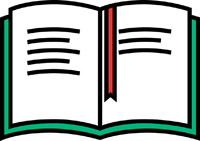Buros Center for Testing

Buros Center: Professional Staff Publications
Document Type
Article
Date of this Version
8-2022
Citation
Perez, A., & Carlson, J. F. (2022, August 3–6). Applying visual methods to document the history of psychological testing: A qualitative approach [Poster presentation]. American Psychological Association, Minneapolis, MN, United States
Abstract
The history of psychological testing is critical to many areas of applied psychology. Assessment forms a mainstay of clinical practice, second only to psychotherapy (Meyer et al., 2001). In industrial/organizational psychological practice, employee selection depends on testing to assess applicant qualifications. In educational contexts, testing is central to the evaluation of academic performance and college readiness, in addition to determining eligibility for various types of special educational services.
The history of testing is deeply rooted in myriad psychological specialties (Carlson & Geisinger, 2021). This fact prompted a qualitative examination and integration of three distinct historical threads identified by the proposal authors: (a) the history of psychological testing in the U.S. over the past century, (b) the work of Oscar Buros and the Institute of Mental Measurements that proved instrumental in the dissemination of reference materials concerning commercial testing products (Brayfield, 1979; Dyer, 1968; Gough, 1980), and (c) the lives of Oscar and Luella Buros who—among other things—established an enterprise that continues to provide critical evaluations of commercially available tests that protect consumers of those products (Cizek et al., 2007; Reynolds, 2010).
This poster presentation examines critical events in the history of psychological testing from the 1930s to present-day through the lens of the Buros Institute/Center and the lives of Oscar and Luella Buros. The research method employed demonstrates the utility of a nascent qualitative approach to integrate three strands of history concerning psychological testing. The procedure emphasized visual methods (e.g., Ownby, 2017; Reavey, 2020) to systematically collect qualitative data, primarily photographs. Photographs (e.g., photo documentation) were gathered from archival and current sources, including the Luella Buros Collection curated by the Anthropology Department of a mid-Western university. Next, we aligned depictions of major historical events with depictions of events in the history of the Buros Institute/Center and the lives of the Buroses. The poster included images selected from a pool of more than 12,000 by consensus of the researchers.
The poster displays visual representations (e.g., photographs) grouped by decades over the past century. The researchers link visual depictions (e.g., the first Mental Measurements Yearbook [MMY] in 1938, staff at work producing early MMYs, the house in NJ where the Buros Institute was established) with salient events across the histories of psychological testing. A qualitative analysis/summary demonstrates associations between and among the three specified historical strands.
References & credits are in the attached supplemental file.
References, credits
Included in
Cognitive Psychology Commons, Educational Assessment, Evaluation, and Research Commons, Industrial and Organizational Psychology Commons, Other Education Commons, Quantitative Psychology Commons, School Psychology Commons


Comments
Copyright © 2022 by the authors.